data
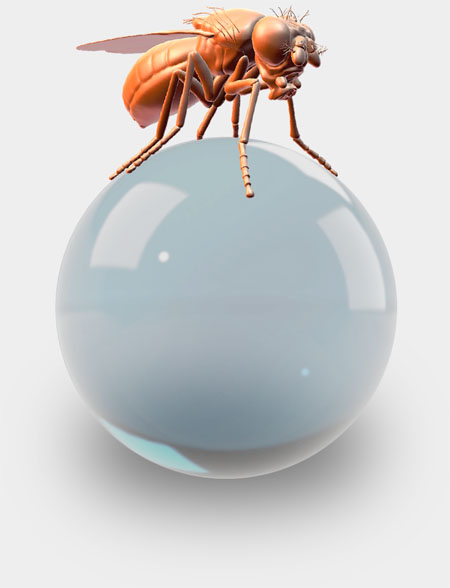

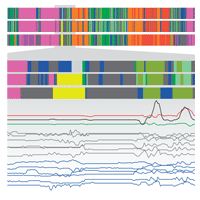
automated behavioral classification
classifications of
spontaneous behavior, assigned
by human investigators
and machine learning algorithms

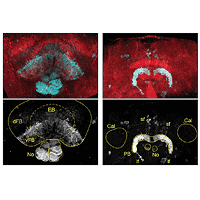
neural circuit for handedness
neural circuit elements
(PB-FB-No projection neurons)
regulating behavioral diversity

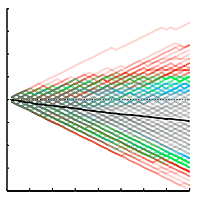
phototactic choice histories
individual flies display
divergent light preferences
over time; color indicates
statistical significance

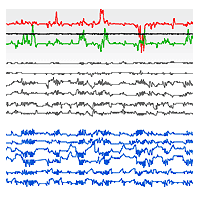
leg and fly motion
fictive motion of a fly
running on a ball
in the LegTracker
and the x- and y- coordinates
of its legs, over time

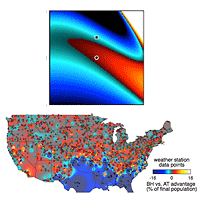
evolutionary phase space
predicted optimal
evolutionary strategies
underlying behavioral diversity,
varying across climate
and geography


behavioral ethograms
a visual representation
of the Markov transition rates
between various modes of
spontaneous fly behavior -
determined by the LegTracker

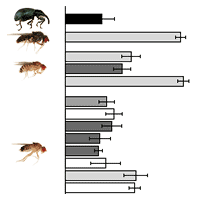
variation across species
the white clover weevil and
three Drosophila species
vary across strain and species
in how much phototactic
personality they have

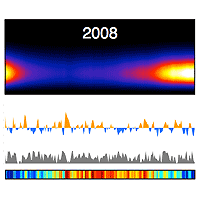
effect of weather on behavior
predicted fly population dynamics
and phototactic behavior dynamics
as influenced by real world
weather conditions from 2008

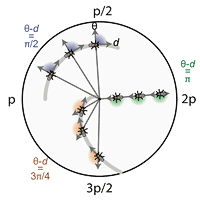
exploration metric
schematic of a metric
to characterize spontaneous
exploration of a circular arena

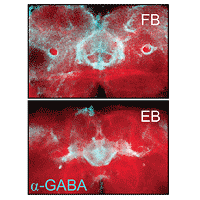
GABAergic circuitry
GABAergic neurons in the
fan-shaped body and
ellipsoid body,
densely packed neural circuits
mediating locomotor decision-making

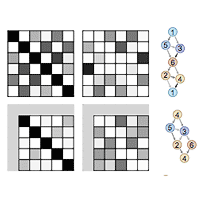
injury and gait
leg motion transition matrices
and gait schematics
before (top) and after (bottom)
amputation of a fly's fore leg

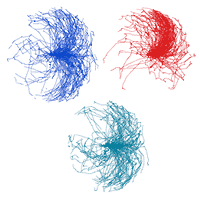
injury and exploration
exploratory paths,
segmented and registered,
before (blue) amputation of a leg,
immediately after (red), and
after a few recovery days (cyan)

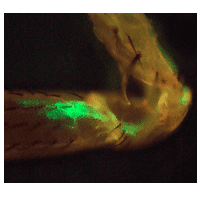
leg proprioceptive organ
green fluorescent protein
expressed in the
femur chordotonal organ,
a sensory structure encoding
proprioceptive feedback
inventions

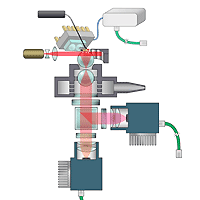
LegTracker
an instrument for
recording the position
of all 6 of a fly's legs,
in real time, at 80Hz

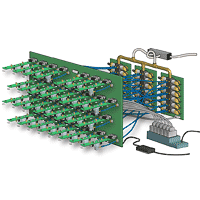
FlyVac
coordinates 32 modules
to autonomously measure
the light preference
of individual flies,
many times each

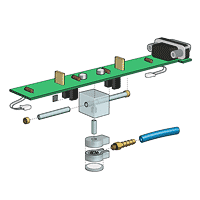
FlyVac Module
a behavioral T-maze
built into an circuit board,
uses infrared beams to
detect when a individual fly
chooses to go toward or away
from a light source


SlowPhotoBox
measures the resting
shade vs. light
light preference of
individual flies,
30 at a time

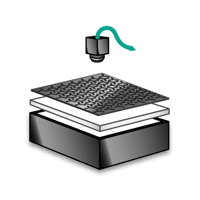
Y-maze array
measures locomotor handedness
and exploratory activity
of individual flies,
120 at a time
models

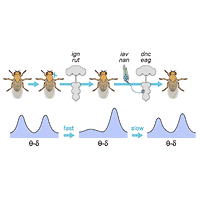
gait recovery after injury
stages of exploratory
walking behavior following injury
and the genes required
to transition between these stages

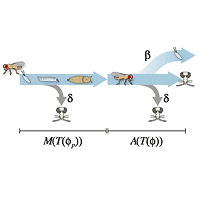
fly life history
basic fly life history:
birth as an egg
metamorphosis
adulthood and egg-laying
various ways of dying

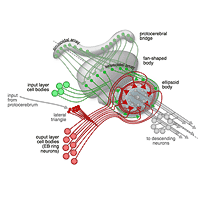
spatial decision-making circuit
a model of an azimuthal
decision-making circuit
in the central complex
of the fly brain

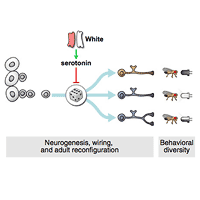
origin of phototactic personality
developmental timing
and genetic regulators
of phototactic personality

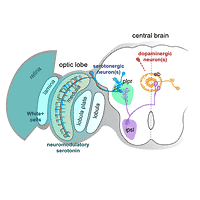
neurons regulating phototaxis
neuronal elements implicated
in the control of the
polarity, plasticity and variability
of phototactic responses